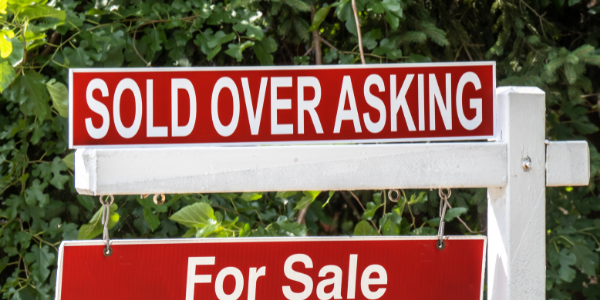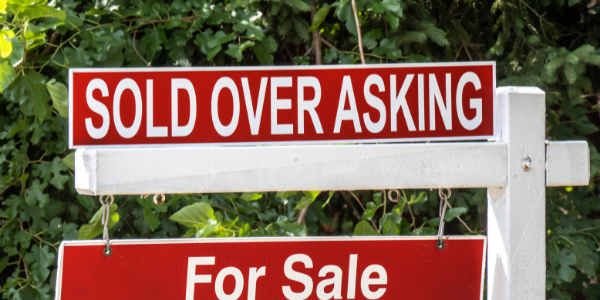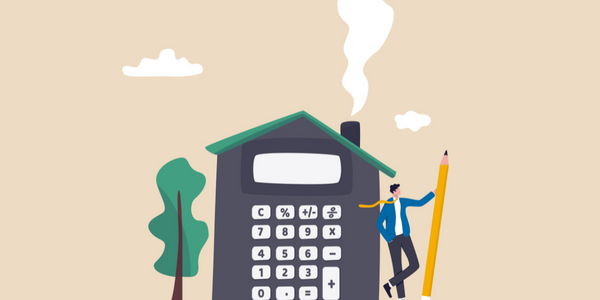
Like any other item for sale, the value of a home can be viewed two ways: the price you pay for a home, which can be the list price—or a higher or lower price depending on demand (in a hot market, the price may be above the asking price, while in a cooler market it might be below), and there’s the home’s appraised value. This is the price determined by a licensed professional home appraiser who will take many factors into consideration, including the home’s features, condition, improvements, location, and market trends.

The two terms are not the same. Appraised value states what the home is worth, while sales price illustrates what buyers—or, at least one buyer—are willing to pay for this home, in this neighborhood, in this market. Appraised value is essentially the “true value” of the good, while the sales price is all about supply and demand. When any asset is in high demand, prices tend to go up. When there’s less demand, prices start to trend lower. Need an easy example? Think toilet paper in mid-2020.
While a fun fact to throw out at the next dinner party when talk turns to housing, it’s an easy way to compare value. When no one could get their hands on TP, they were willing to pay almost anything to get it. Fast forward 12 months, and you can find all the fluffy rolled paper you want on store shelves—and no one is paying a premium because it’s readily available and demand is lower.
Financing
Many people incorrectly believe that as long as they’ve been approved for a certain loan amount—say, $400,000—then they’re free to buy whatever home they like within that budget. This isn’t necessarily true.
Not only must an appraiser ensure that the home is habitable before the loan can close, but any discrepancy between a home’s appraised value and sales price will be the responsibility of the buyer. For example, say you were going to put $100,000 down on a home where your winning bid was $500,000. The math seems to work out, as you’ve stayed within your $400,000 loan limit.
Here’s the problem: the home’s appraised value comes in at $460,000. The seller was simply able to get more for the home than its appraised value because it’s an extremely competitive housing market, and perhaps the home had desirable features in this current environment. In that scenario, you would be responsible for the difference between the sales price and the appraised value. That’s because lenders can’t lend beyond a home’s appraised value, regardless of what the house actually sells for— they must use the lesser of the two.
This is important to keep in mind, especially in today’s hot housing market where it’s easy to get sucked into a bidding war. You can certainly enter that bidding war if you choose, but you should keep in mind that if the price exceeds the current value, you’ll be responsible for the difference between the home’s sales price and its appraised value.
On the flip side, if the appraised value of a home you just bought comes in higher than the sales price, then you got yourself a deal! Your mortgage won’t be affected by this, and good news—you’ve got a little more equity than expected.
What Determines Appraised Value?
We know you’re not an appraiser, but it always helps to know what the professionals are looking at when they’re determining a home’s appraised value.
The licensed appraiser will be assessing:
- The price of comparable homes that have recently sold in the neighborhood or surrounding neighborhoods
- The home’s features and amenities, including square footage, number of bedrooms and bathrooms, and exterior spaces
- The home’s condition, including its foundation, roof, drains, windows, patios, and balconies
- Any improvements to the home, including add-ons, updated cabinetry, new countertops, and room conversions, including the quality of the improvements
- Market trends and data
No one expects you to be able to tell there’s mold in the attic, but it pays to have a keen eye out when you’re touring a home for any red flags you may see. Stains in the ceiling, cracked cement, and cabinets that don’t open all the way because they were installed too close to another item may be signs that the appraised value could be lower than the sales price. This is also why it’s a good idea to use a professional real estate agent, as they can look at comparable home sales in the market to determine whether the sales price is in line with others.
Now, again, this is looking at the sales price—not the appraised value. But if the comps in your desired neighborhood are showing that most homes have sold for between $550,000 and $575,000—and this home is listed at $625,000—then you may want to think long and hard about whether you want to engage in a bidding war that may result in a large gap between the sales price and the potential appraised value. This is especially true if said red flags are present.
Strategies for Buying a Home
There are a few things you can do if you suspect there will be a difference between the appraised value of a home and the sales price.
If you want to stay within your loan limit, the best thing to do is look for homes on the lower end of your budget. This gives you a little wiggle room to perhaps shift some of your down payment towards the “overage” if the home appraises for a little less than the sales price.
Depending on the loan-to-value, you may be able to request a loan increase from your lender if you have a sizable down payment. If it’s denied, your other options would be asking the seller to accept a lower sales price or securing the additional funding needed through a gift—but it’s important that you keep your loan advisor in the loop as there may be some unintended consequences to changing the financing picture. And don’t fret, loan advisors are your friends in the process and will work and rework loan scenarios to help you meet your goals.
What to Know About Sales Price vs. Appraised Value
There is absolutely nothing wrong with a sales price that is higher than a home’s appraised value—as long as you go in with your eyes wide open. A home sold for more than it appraises for can certainly continue to go up, and you may find yourself in a similar situation when it’s your turn to sell. It’s also possible, unfortunately, that the market cools and the value doesn’t hold up, which could affect your bottom line later when trying to refinance or sell. Either way, there are considerations that should be thought through before you find yourself in this scenario.
That’s why APM is here. We’re happy to discuss appraised value vs. sales price and go over all your housing scenarios with you, based on your unique financial situation. Go here to find an APM Loan Advisor near you.







